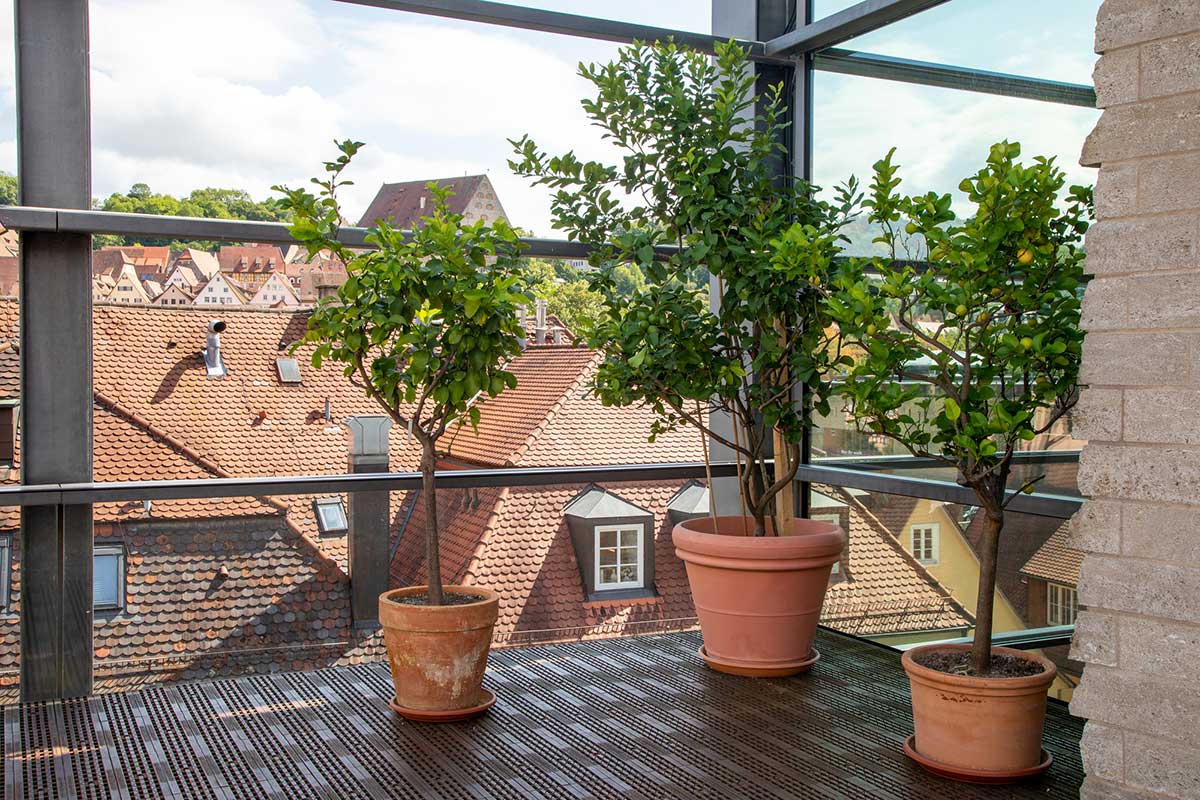Growing lemon trees in pots requires a balance of sun, nutrients, and water for your tree to have dark green leaves and an abundance of lemons. Having your lemon tree in a pot can be tricky without enough nutrients or the right watering practices.
However, these citrus trees are a delight to the senses. Planting them in a pot allows you to keep them indoors or outdoors on your patio or deck. To help you care for your lemon tree in a pot, here are 10 of the common problems with lemon trees in pots and the solutions to overcome them.
10 problems with lemon trees in pots
Keep your lemon tree in a pot healthy by watching out for these common problems linked to pests, location, watering routines, and soil nutrient.
1. There is slow or no growth
If your lemon tree is growing slowly, or not at all, there is most likely an imbalance in the soil. The pot could lack key nutrients or have something present in an excessive amount.
Make sure to repot your lemon tree and use a quality potting mix with slow-release fertilizer and organic matter for better drainage. Place the plant in an area receiving a lot of sun and frequently water your lemon plant.
2. Leaves turning yellow
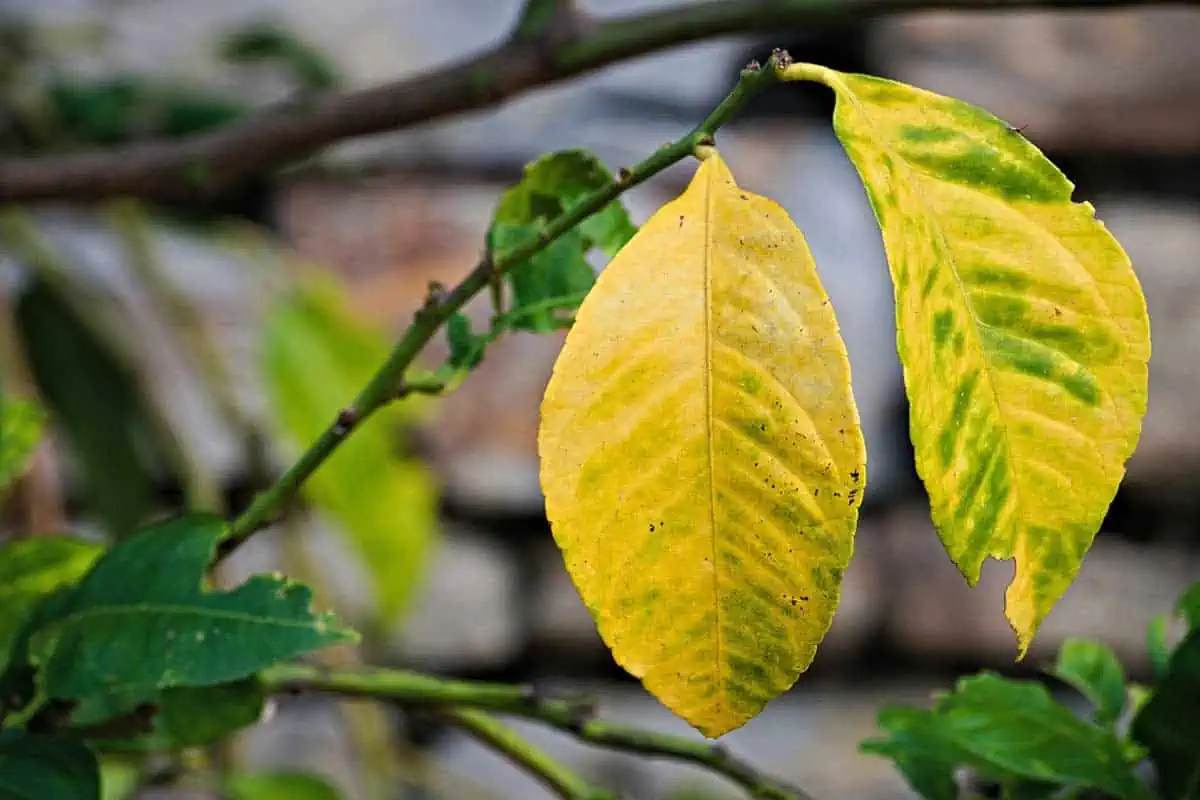
If your lemon tree leaves are turning yellow it could be due to overwatering or nutritional deficiencies in zinc, nitrogen, iron, or magnesium. Test the root zone soil to make the right adjustments.
You will also see the leaves turning yellow before falling off as the rootstock goes into a winter slow down. The tree is naturally sending fewer nutrients to the leaves.
Suppose you see green veins and yellow leaves starting at young leaves before spreading through the lemon tree. In that case, it is most likely an iron deficiency because the fertilizer in the pot isn’t replenished often. You can buy iron chelates in powder or liquid form to add to your pot every spring.
3. Yellow spots on the leaves
Pests are the most likely culprit for yellow spots on your lemon tree’s leaves. These spots caused by sap-sucking insects can grow together to form larger patches on the leaves. You can remove these pests with:
- Regular garden hose blasts for aphids and whiteflies
- Horticultural oil or chemical treatment for mealybugs and scale with waxy coating
- Soap-based miticide for mites
When using horticultural oil, make sure to wear long pants, gloves, and long sleeves to prevent skin irritation. Mix the oil concentrate with water and spray your entire tree with a pressure or trigger sprayer.
4. Curled leaves or brown leaf tips
Excessive leaf curling, leaf drop, or brown leaf tips are clear signs of underwatering your lemon tree. This will significantly stunt the tree’s growth rate because new growth dies off quickly in dry conditions.
If the leaves are completely brown it could also mean the tree was moved from the shade to the sun. You need to gradually acclimate your tree to full sun conditions.
Since lemon trees love the sun, the soil in the pot will dry out quicker so you want to keep a close eye on your pot. Water every 1 to 2 days and when the top inch of the soil is dry. During the winter, the watering frequency will reduce to once every 7 to 10 days.
5. No flowers or fruit growing
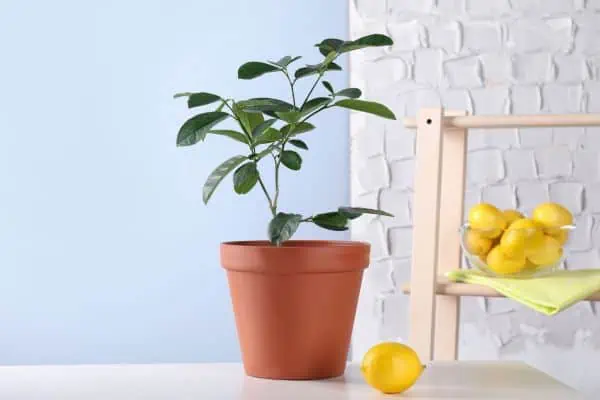
Sometimes you don’t see flowers or fruits on your tree because it is too young. Lemon trees typically start producing flowers and fruit after 2-3 years. However, if you have an older tree with no flowers or fruit, then you need to add more potassium and phosphorus by using a flower and fruit promoting fertilizer. These fertilizers decrease the nitrogen to potassium to phosphorus ratio so your tree can start bearing fruit.
6. Premature fruit drop
Fruit dropping can be a natural way for the tree to reduce the heavy fruit load. However, excessive premature fruit drops can be caused by not enough water or sudden temperature changes causing tree stress.
If you see there’s about to be a hot day, water your tree well the night before. You can also protect it from too much afternoon sun to prevent drying out and fruit drop.
7. Cold temperature damage
Lemon trees in posts will experience serious damage at temperatures below 25℉. The tree’s leaves, fruits, and wood cell membranes will rupture when water freezes.
Cover your lemon trees with a blanket, frost cloth, or heavy tarp when the weather is predicted to drop below freezing.
If there is a prolonged period of freezing, consider moving your lemon tree indoors. Having wheels on the bottom of your pot is the easiest way to move lemon trees without disturbing the roots.
However, if you bring the tree in after a chill outside the extreme temperature swing can cause stress and make the tree lose its leaves so stay up on the weather reports.
8. Transplant shock problems
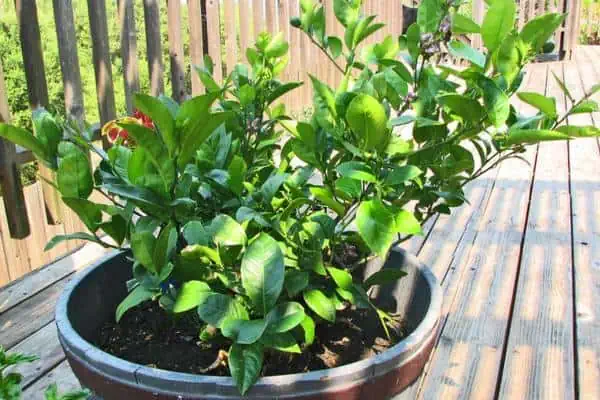
If you are repotting your lemon tree or transplanting it to a larger container, it’s best to choose citrus varierties suited to containers. For example, dwarf trees are smaller and easier to plant since they suffer less from transplant shock issues.
Although they yield less fruit, they produce the same quality and size of fruit and will be easier to take care. Improved Meyer lemon trees are popular smaller trees that can thrive longer in containers.
Other ways to avoid transplant shock is to transplant during the beginning of spring or end of fall. Keep the root system in tack without shaking out the soil when moving the plant and make sure the root ball stays moist so the plant doesn’t dry out and die. You also want to water your tree immediately after moving, especially for young plants.
9. Fungus growth on leaves
If you find fungal growth on your lemon tree leaves that are white, black, or gray it means you have excess water sitting on the leaves. The most common fungus is sooty mold, covering the leaves in gray.
Cut off infected leaves and make sure to water only the soil and root system. You can also keep your tree well-trimmed to increase air circulation between the leaves.
10. Improper container drainage
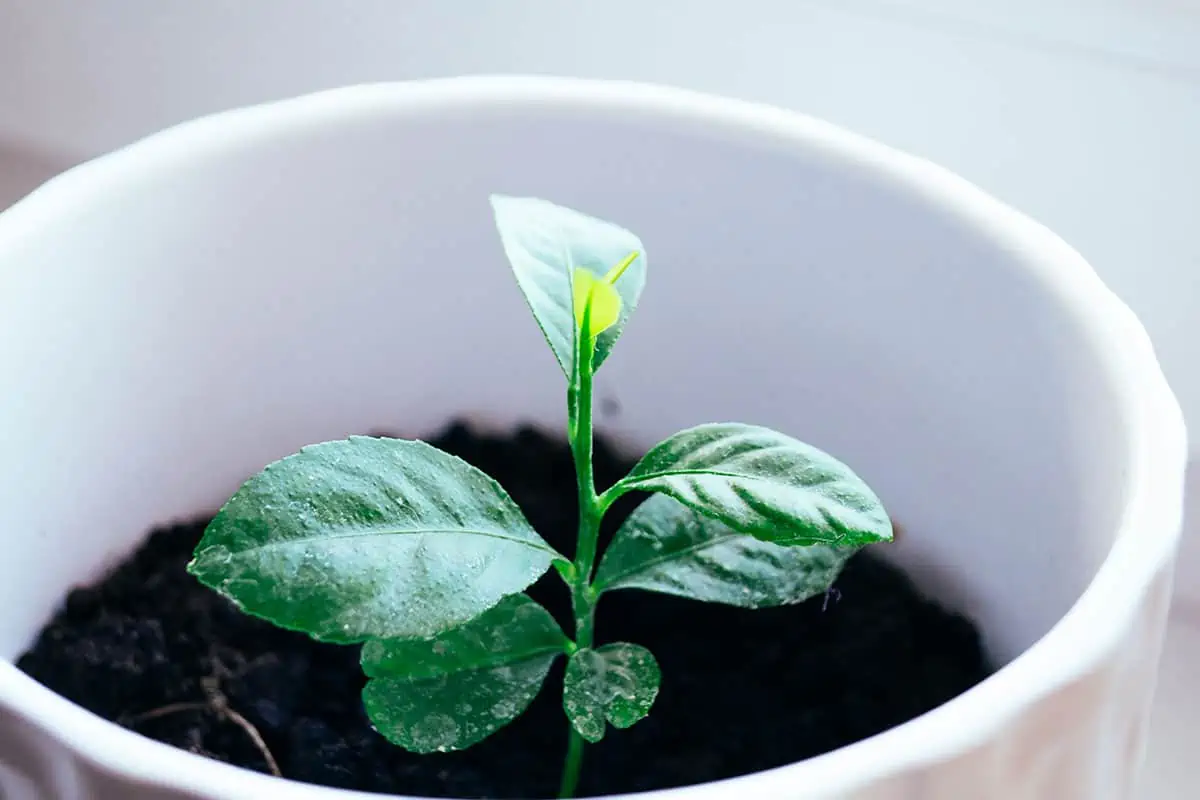
Although lemon trees like consistent moisture in the soil, they can’t thrive in waterlogged soil. Excess watering affects the tree’s leaves, fruit, and root system. Mold or fungi can grow to cause root rot and leaves can turn yellow, brown, and drop. Always allow the soil surface to dry out between waterings.
Also, make sure you have a container with drainage holes in the bottom to allow excess water to drain out. Always remove any excess water in the tray underneath the container, so the plants aren’t sitting in water. If you notice too much water puddling, then you are probably watering too often or have too compacted soil.
